Ash trees are a diverse group of deciduous trees belonging to the genus Fraxinus, which comprises about 45 species worldwide. Known for their robust wood and stunning seasonal foliage, ash trees are widely appreciated in both natural and urban landscapes.
They can be found in a variety of environments, from dense forests to residential gardens, and are characterized by their compound leaves, unique flowers, and distinctive bark.
In this article, we will explore 22 different types of ash trees, complete with pictures and detailed leaf identification tips.
Different Types of Ash Trees
Blue Ash
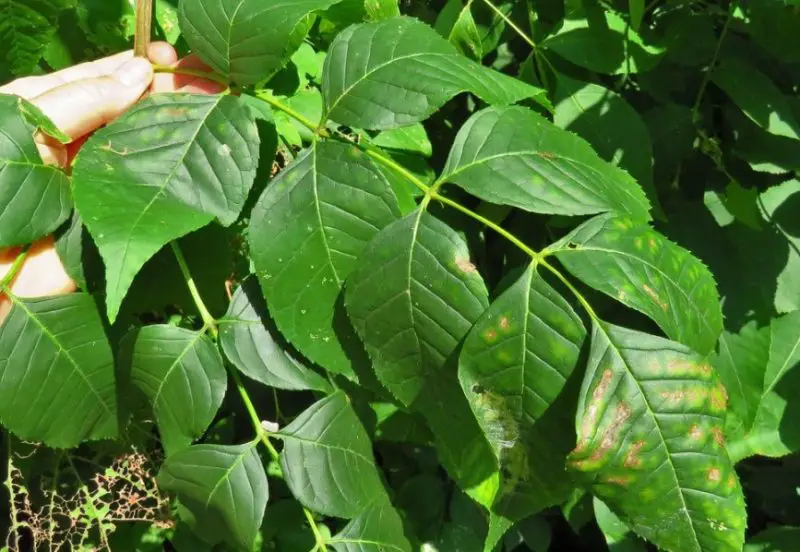
The medium-sized Blue Ash (Fraxinus quadrangulata) tree is easily identified by its unusual square-shaped twigs, which have earned it the moniker “four-cornered ash.” The Blue Ash, which may reach heights of 50 to 75 feet, is a great tree for shade. Its leaves are compound, opposite, and have five to nine oval, short-stalked leaflets.
The tree bears several small, purplish-green, bisexual blooms. These blossoms turn into samaras, which the wind scatters and hangs in clusters. Mature Blue Ash trees have grayish bark that cracks into uneven plates. Regrettably, the emerald ash borer (EAB), an invasive bug that affects all ash species in North America, has made blue ash increasingly rare and endangered.
Black Ash
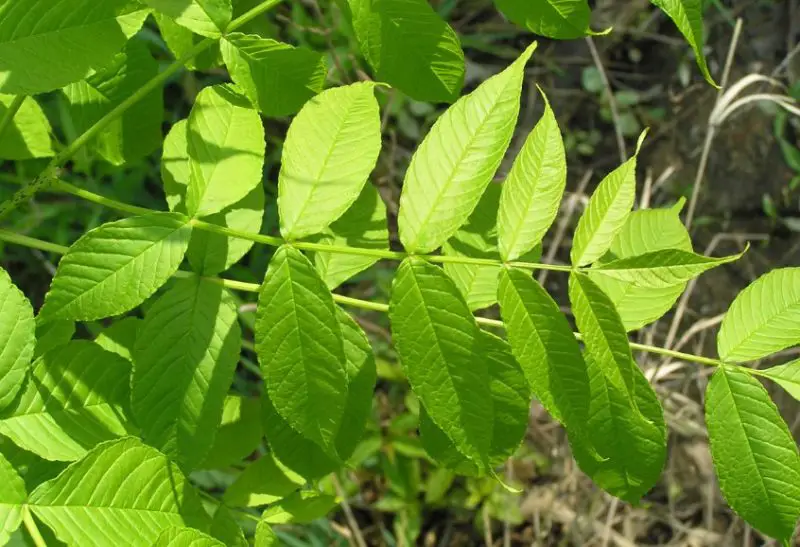
The Black Ash, or Fraxinus nigra, is a medium-sized deciduous tree that reaches a maximum height of 20 to 25 meters, with some exceptional examples growing as high as 26 meters. The trunk’s diameter can reach up to 24 inches, or roughly 60 cm. When a tree is young, its bark is thick, corky, and grey; as it gets older, it becomes rough and cracked. Winter buds have a velvety texture and range in color from dark brown to black.
Black Ash leaves are composed of seven to eleven toothed leaflets and are pinnately complex. Autumn brings the fall of these sessile leaflets to the ground because they do not have distinct stalks. Springtime brings flowers that blossom just before new leaves appear. The leaves are arranged in a structure resembling feathers. Inconspicuous, wind-pollinated, and lacking petals, the blooms develop in loose panicles.
Green Ash
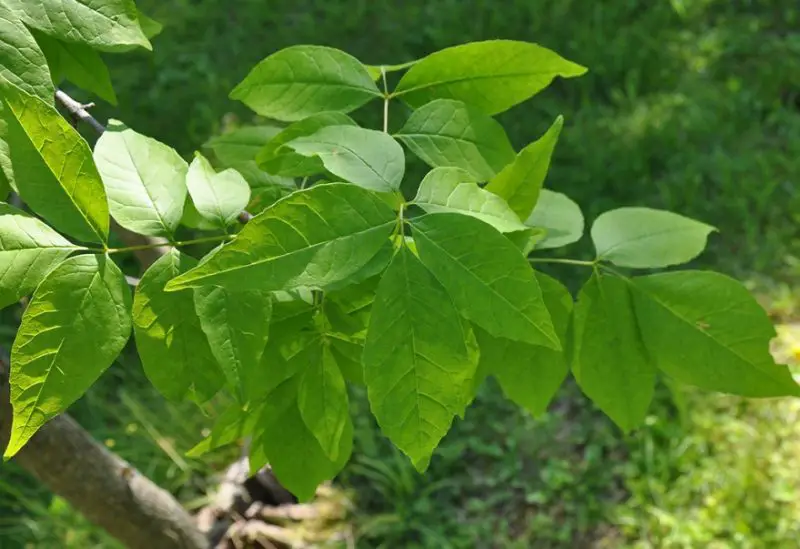
Growing to a height of 60 feet and a width of roughly 45 feet, the Green Ash (Fraxinus pennsylvanica), also called Red Ash, is a deciduous tree. In young trees, the bark is smooth and gray, but as the tree ages, it becomes thick and severely fissured. The velvety, reddish-brown winter buds have a smooth feel.
The twigs droop downward before curling upward at their tips, imitating the structure of basswood trees, while the main branches grow erect. In the fall, the lustrous, dark green foliage becomes a brilliant yellow color. With a native range that stretches from Nova Scotia to Alberta in Canada and southward across the United States to Florida and Texas, green ash has the broadest distribution of any ash species. It grows naturally in moist areas like sloughs and floodplains, as well as alongside riparian zones.
White Ash
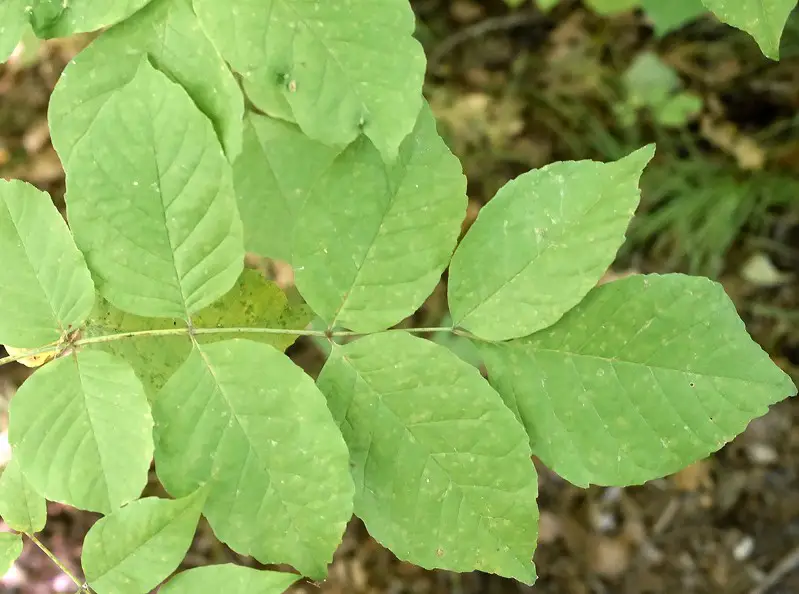
Growing to a height of 65 to 100 feet, the White Ash (Fraxinus americana), often called Biltmore Ash or Biltmore White Ash, is a common tree. When the tree achieves maturity, its branches will have spread equally throughout, giving it a rounded form. The leaves are dark green, placed oppositely, and are pinnately complex, comprising of seven leaflets with pinnate veins and toothed ends.
The tree has a winged fruit that is slightly longer than an inch, called samaras, which hang in clusters and can stay on the tree all winter. White ash trees have beautiful fall colors ranging from yellow to deep purple and maroon, and they are frequently employed to shade parks, huge yards, and other vast spaces.
Apart from its aesthetic significance, White Ash wood is widely sought-after for crafting an array of athletic gear, such as hockey sticks, tennis rackets, oars, and the renowned Louisville Slugger baseball bats. It is also frequently used as handles for a variety of tools, interior flooring, and furniture.
California Ash
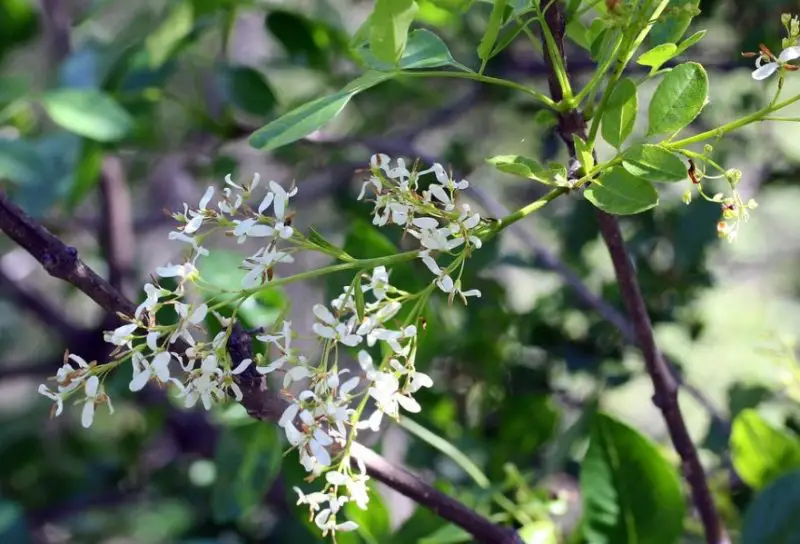
The compound leaves of the California Ash (Fraxinus dipetala), sometimes called the Two-Petal Ash, are 6 to 9 inches long and have five to nine leaflets apiece. With a trunk diameter of around three feet, this medium-to-large tree normally reaches a height of 40 to 60 feet, while some individuals can grow as high as 120 feet. The California Ash’s winged fruits, or samaras, have a paddle-like form that aids in seed distribution.
With a rounded crown, mature trees have a slightly pyramidal shape. The species’ native environment, which is limited to California, is the source of its name. Its blooms are distinctive; they have two white, lobe-shaped petals that are between 2.5 and 4 mm long, and they smell delicious. In contrast to many ash species, these blooms are bisexual rather than dioecious and occur in fluffy clusters.
European Ash
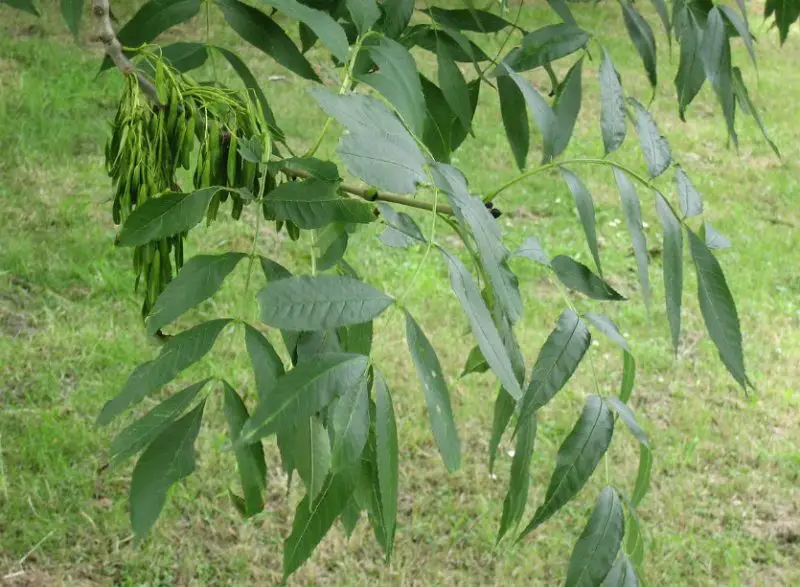
Fraxinus excelsior, also known as the European Ash, is a large tree that reaches heights of 115 feet and spreads up to 60 feet. Its nearly black buds, which differentiate it from other ash species, are one of its distinctive characteristics. As an alternative to other ash trees, it usually has a wider distribution. Rich colors of yellow emerge in the fall from the dark green leaves, which are made up of seven to thirteen leaflets placed in opposition to one another.
Winter interest is added by the tree’s lovely silvery-brown bark, which becomes more noticeable after the leaves fall and forms diamond-shaped ridges and furrows. The plant is dioecious; male and female blooms are purplish and occur on distinct trees in mid- to late April. A significant timber tree, the European Ash is prized for its wood. For expansive landscapes, it makes a great specimen tree or shade tree.
Gregg’s Ash
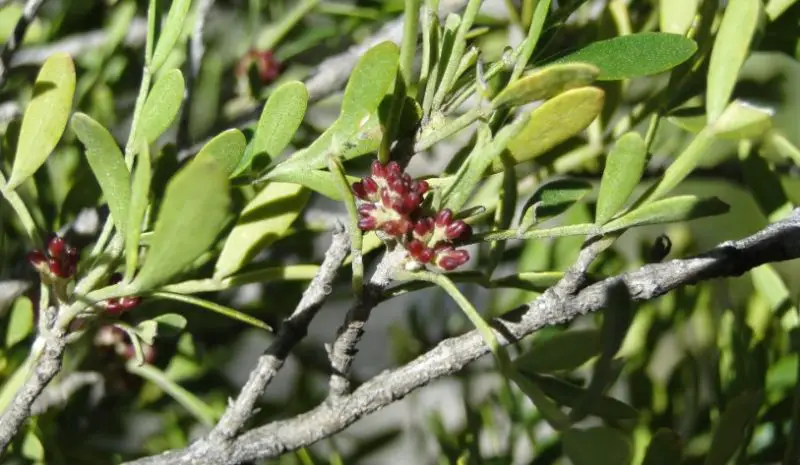
The amazing Gregg’s Ash (Fraxinus greggii) is a little tree or shrub that grows mostly in dry creek beds and washes in southern and southwestern Texas, as well as on rocky limestone slopes and canyons. Its maximum height is 19 feet. The tree is distinguished by its smooth, thin, gray bark and its practically evergreen, less than 2-inch-long leaves. Its unique appearance is further enhanced by its slender branches and pinnately complex, dark-green, leathery leaves.
The perfect Gregg’s Ash blooms can be found on different trees, within the same flower cluster, or on distinct trees, indicating that they are male or female. Its versatility and capacity to withstand dry circumstances make it a good fit for its dry habitat.
Manna Ash
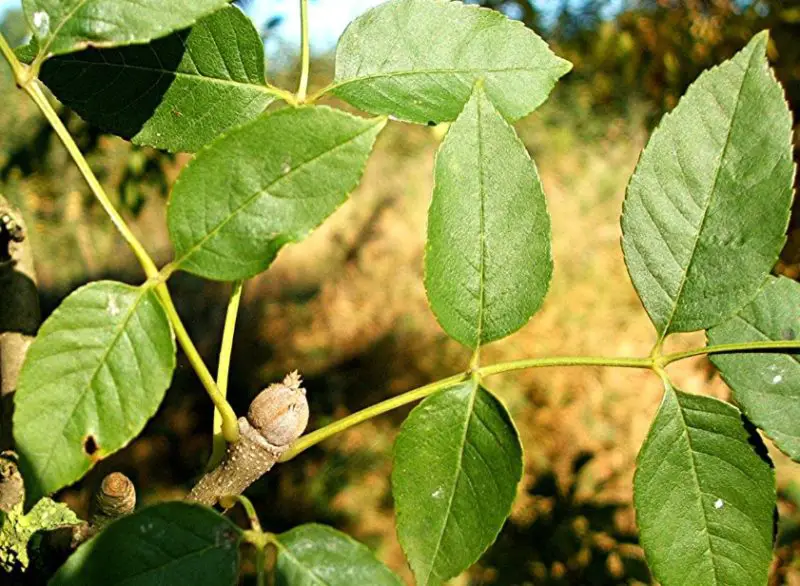
The stunning medium-sized deciduous Manna Ash (Fraxinus ornus), commonly called the Flowering Ash, has an uneven, dense, oval to almost spherical crown with a short stem. It produces fragrant, beautiful white flower panicles in late April that climb above the foliage to provide a visually arresting display. These are followed by clusters of winged seeds that ripen in the fall and can remain on the tree throughout the winter.
Compound, pinnate blue-green leaves with five to nine leaflets apiece make up the foliage. The foliage adds brilliant fall color in the fall as it turns rich tones of yellow-burgundy to reddish-purple. The smooth, silvery bark is more noticeable after the leaves fall, adding to the winter’s visual appeal. Manna Ash is prized for its beauty and seasonal interest, making it a great specimen tree or shade tree for expansive landscapes.
Narrow Leaf Ash
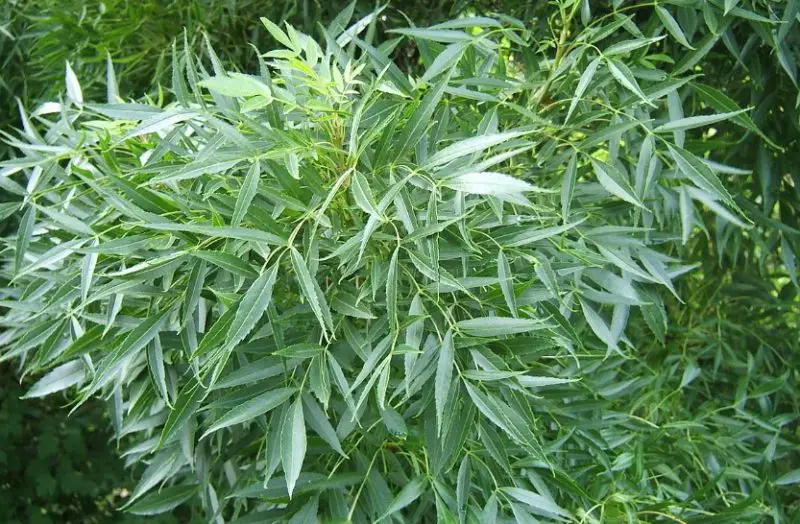
The medium-sized tree known as Narrow Leaf Ash (Fraxinus angustifolia) can reach a height of 20 to 30 meters and a diameter of up to 1.5 meters for its trunk. The smooth, light gray bark of young trees turns into square-cracked, knobbly bark as the tree becomes older. Its pale brown buds, which immediately set it apart from the European Ash, which has black buds even in the winter, are one of its important characteristics.
The tree’s name comes from its pinnate leaves, which are grouped in whorls of three or opposing pairs and have thin leaflets. The diversity of the tree’s reproductive system is enhanced by the flowers, which are produced in male, hermaphrodite, or a combination of the two inflorescences.
Pumpkin Ash
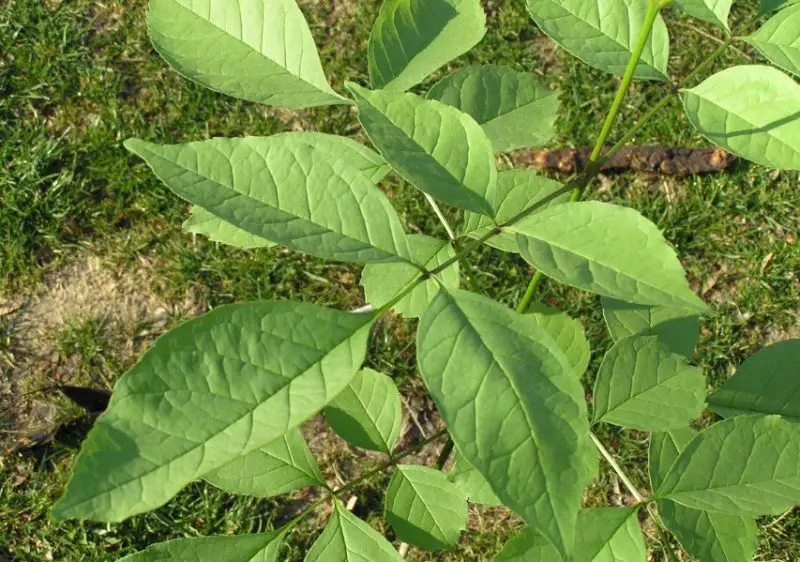
The Pumpkin Ash, or Fraxinus profunda, is a massive tree that may grow to a remarkable height of 130 feet. Under ideal circumstances, the trunk diameter of the tree can reach 5 feet. This species grows best in places where there is standing water for much of the growth season, which frequently causes the base of the tree to swell and take on the shape of a pumpkin. The tree’s robust limbs, which offer a lot of shade, support its broadly rounded crown.
Unfortunately, the Pumpkin Ash is becoming increasingly rare, much like other native species in the Fraxinus genus, primarily due to the devastating impact of the emerald ash borer. It is typically found in wet, swampy areas and has a tendency to grow in deep standing water, making it an essential component of its unique ecosystem.
Velvet Ash
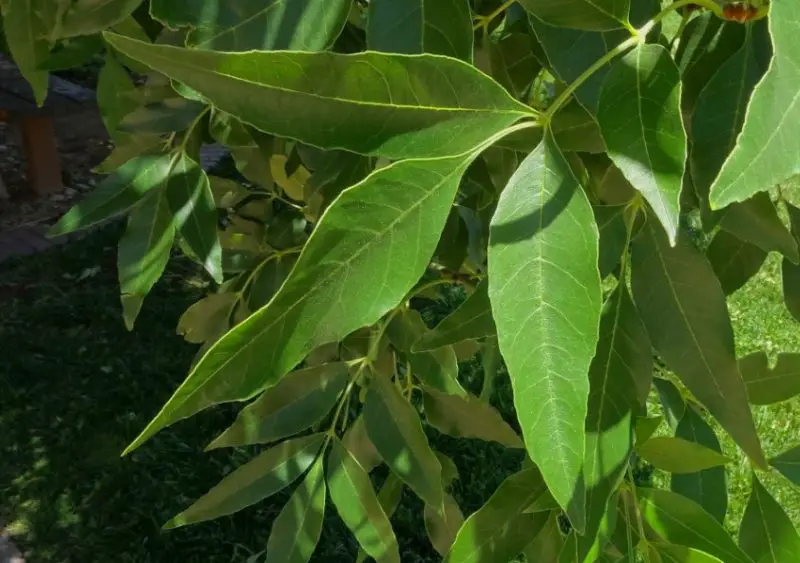
The Velvet Ash (Fraxinus velutina), commonly called Modesto Ash or Arizona Ash, is a tiny deciduous tree that can grow up to 10 meters tall and 30 centimeters in diameter in its trunk. This tree has spreading branches that produce an open, rounded crown, and its leaflets vary greatly in shape and hairiness. The new branches are clothed in a velvety down, and the bark is fissured, rough, and gray-brown.
Velvet Ash is dioecious, meaning that the male and female flowers grow on different trees, and it produces little clusters of blooms in the early spring. Particularly in California and the Southwest, the Modesto Ash is a fast-growing cultivated type that is commonly planted as a street tree in arid regions, including those with alkaline soils. Its tolerance to tough environments makes it a popular choice for urban landscaping.
Shamel Ash
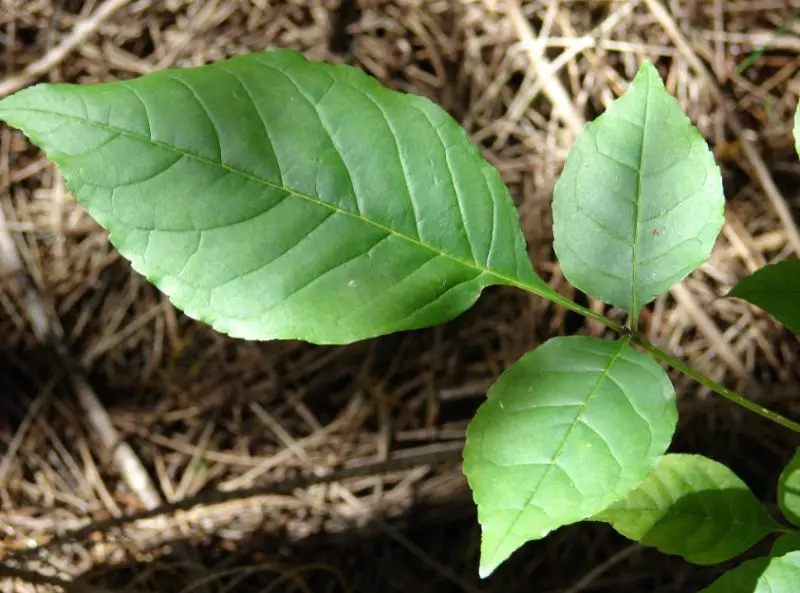
Shamel Ash (Fraxinus uhdei), also known as Tropical Ash or Evergreen Ash, is a fast-growing tree that can reach impressive heights of up to 80 feet, with a spread of up to 60 feet. This tree is particularly notable for its showy leaves, which can be as long as 11 inches and are composed of up to 9 leaflets, creating a lush and attractive canopy.
While it is classified as an evergreen species, the Shamel Ash can tolerate brief periods of temperatures as low as 20 degrees Fahrenheit. However, during such cold spells, the tree may drop some leaves or experience branch dieback. Despite this vulnerability, its resilience and rapid growth make Shamel Ash a popular choice for landscaping in suitable climates, where it provides ample shade and visual interest throughout the year.
Autumn Purple Ash
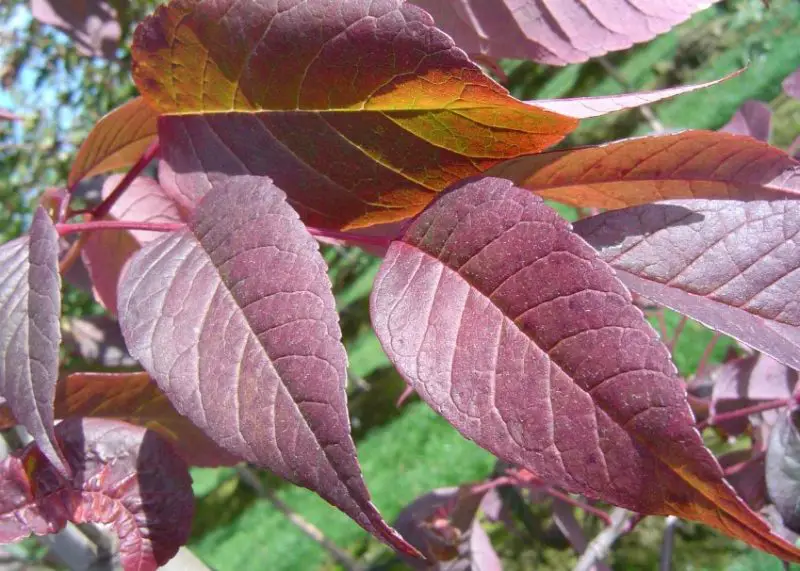
Autumn Purple Ash (Fraxinus americana ‘Autumn Purple’) is a male cultivar of the white ash tree, renowned for its striking reddish-purple fall foliage that emerges early and persists well into the autumn season. This impressive tree typically grows to heights of 45 to 60 feet, making it a notable presence in any landscape.
Each leaf consists of seven oval-shaped leaflets that range in length from 2 to 4 inches, contributing to the tree’s lush appearance. The bark can vary in color from yellow-brown to light gray, featuring deep furrows that add texture to the trunk as it matures.
As a dioecious species, white ash trees have distinct male and female individuals, and the Autumn Purple Ash being a male cultivar does not produce fruit. This characteristic makes it an excellent, mess-free landscaping option, allowing homeowners and landscapers to enjoy its beauty without the worry of fallen seeds or fruit cluttering the ground. Its vibrant autumn color and clean growth habit make the Autumn Purple Ash a popular choice for ornamental planting in parks, yards, and urban settings.
Texas Ash
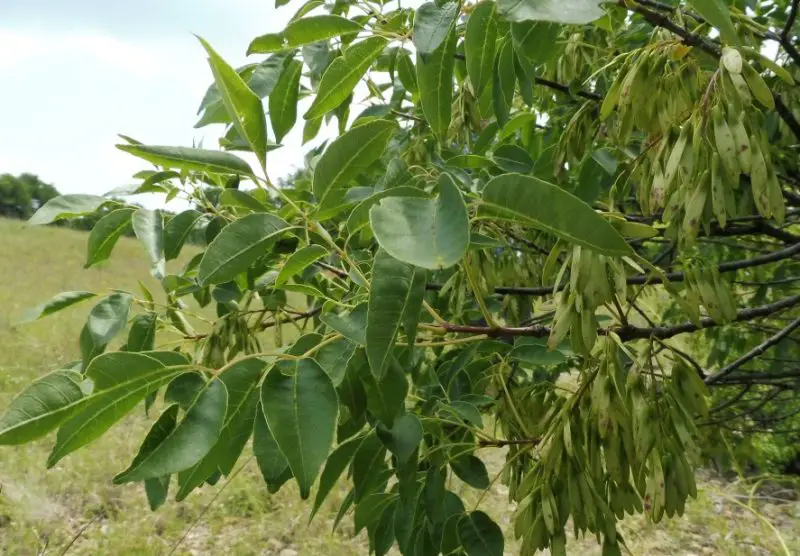
Texas Ash (Fraxinus albicans), also known as mountain ash, is a slow-growing tree that typically reaches heights of about 30 feet, making it an excellent choice for providing shade in smaller landscapes. Its dense, spreading branches support an attractive canopy of olive green to deep green leaves, which transform into a stunning display of color in the fall, exhibiting brilliant shades of orange, gold, purple, and red.
In spring, inconspicuous green flowers bloom, adding a subtle touch to the tree’s overall appearance. These flowers are followed by ornamental fruit, which can be pink or red, providing visual interest well into the summer months. One of the key advantages of the Texas Ash is its toughness and durability; it thrives in various conditions and requires minimal maintenance once established, as long as it is planted in appropriate growing environments.
Berrinda Ash
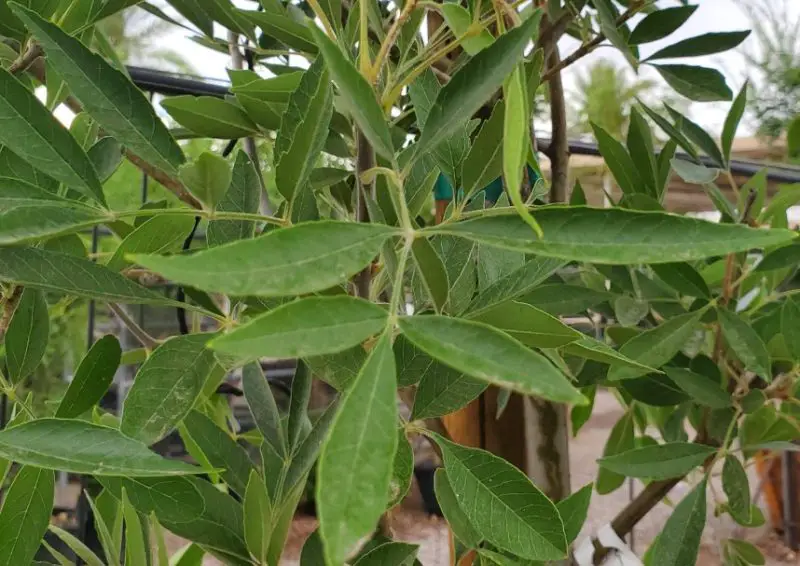
Due to its extensive distribution across the state, Berrinda Ash (Fraxinus velutina ‘Berrinda’) is a cultivar of the velvet ash tree, sometimes known as Arizona ash. The highest height that this cultivar usually achieves is approximately 35 feet. The Berrinda ash tree has a pyramidal form while young, but as it gets older, it becomes wider and wider, reaching up to 35 feet for its canopy.
The Berrinda ash has unique leaves with lobes that hold three or five leaflets, each about three inches long. These leaves change into brilliant yellow hues in the fall, bringing some seasonal brightness to the surroundings. One disadvantage of this tree is that its seeds have wings that can get untidy when they fall. In spite of this, Berrinda ash is still a well-liked option for landscaping because of its attractive form and versatility in different climates.
Manchurian Ash
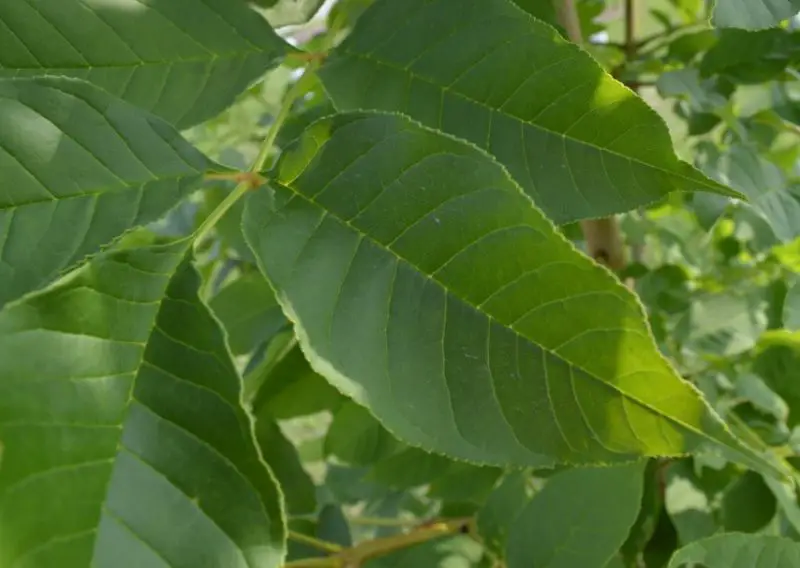
A medium-sized tree with a thick, oval to rounded crown is the Manchurian Ash (Fraxinus mandshurica). It resembles the Black Ash (Fraxinus nigra), which is native to Northeast Asia and Japan’s open valleys and forested hillsides. The leaves are composed of up to 11 lance-shaped, coarsely-toothed leaflets, each measuring 3 to 5 inches in length. The leaves are pinnately compound, reaching lengths of 10 to 15 inches. The leaflets have a velvety texture due to their downy texture on both sides and matte green look on the upper surface. The leaves become a beautiful shade of yellow in the fall.
Non-showy greenish-yellow blooms develop in tight panicles in the spring before the leaves fully emerge. If the tree is dioecious, it might have distinct male and female trees. The winged samaras that develop in drooping clusters between August and October are produced by the female flowers. These seeds enhance the role of the tree in the environment by providing food for squirrels and birds.
Oregon Ash
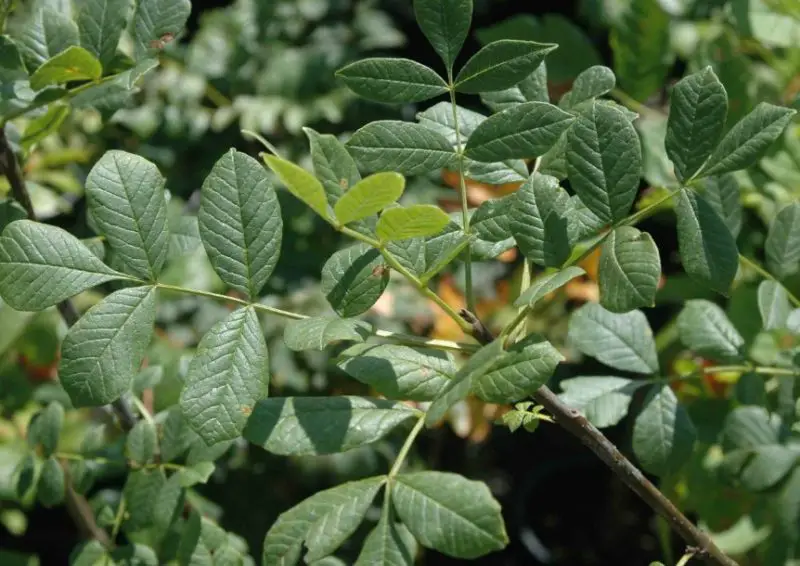
Oregon Ash (Fraxinus latifolia) is a magnificent large tree that can reach impressive heights and is characterized by a straight trunk and a dense, narrow crown. The foliage consists of compound pinnate leaves that are light green, each containing 5 to 9 leaflets. In the fall, these leaves transform into a vibrant, clear yellow, adding a splash of color to the landscape.
The young bark is thin, smooth, and gray-green, transitioning to a thick, gray-brown, and furrowed texture as the tree matures. In spring, before the leaves fully emerge, inconspicuous greenish male and female flowers appear in dense, glabrous panicles on separate trees. The female flowers are particularly notable, as they give way to dense clusters of hanging samaras that ripen in the fall, providing a source of food for wildlife.
Prized for its beautiful symmetrical shape, rapid growth, and hardiness, Oregon Ash has become a popular choice for ornamental plantings and as a street tree. Additionally, it plays a vital role in ecosystem restoration, as it is excellent for revegetating wet, lowland areas, helping to stabilize soils and enhance local biodiversity.
Raywood Ash
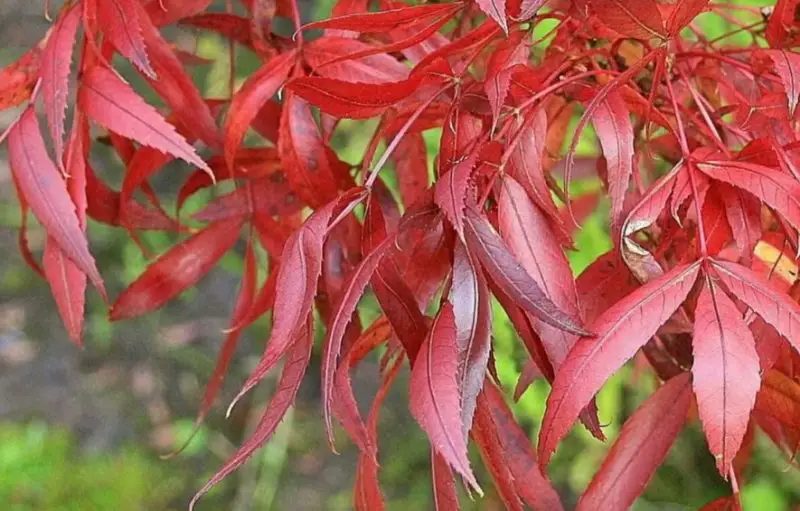
The stunning Raywood Ash (Fraxinus angustifolia “Raywood”), sometimes referred to as Claret Ash, is a tree with dark green, deeply lobed leaves that resemble those of its relative, the Berrinda ash. But the Raywood ash’s fall foliage is especially remarkable, with vivid scarlet and purple tones that make for an eye-catching display in the fall. The tree’s tidy, rounded canopy is given a whimsical touch by the delicate texture of its dark, glossy leaves.
Compared to Berrinda ash, Raywood ash is a cleaner alternative because it doesn’t generate any seeds. This is one of its advantages. Because of its fast growth and resistance to pollution and severe winds, this tree is commonly employed as a street tree and shade tree in suburban and urban areas. In the fall, the rich green leaves of the Raywood ash turn a striking wine-red, giving rise to the moniker “Claret Ash.” Because of its versatility and visual attractiveness, it’s a popular option for improving landscapes.
Chinese Ash
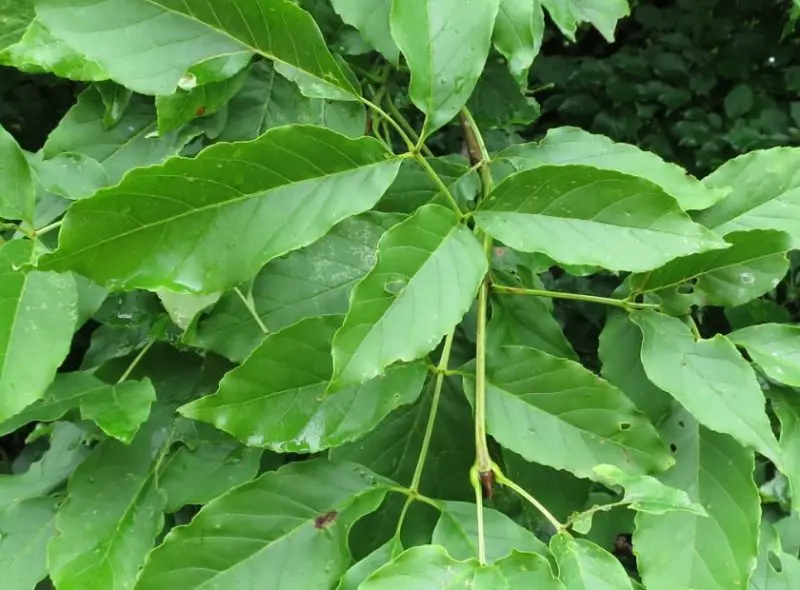
Chinese Ash (Fraxinus chinensis) is a medium-sized deciduous tree that typically reaches heights of 30 to 50 feet, characterized by its rounded crown and broad canopy. The leaves are compound, with 5 to 9 leaflets that are glossy green, turning yellow in the fall. The leaflets are elongated, measuring about 2 to 5 inches in length, and are arranged oppositely along the stem.
In late spring, small, inconspicuous flowers appear, which are usually greenish-yellow and develop into clusters of winged seeds known as samaras. The bark of the Chinese Ash is smooth and gray on younger trees, becoming more fissured and darker with age. This species is known for its adaptability, thriving in a variety of soil types and conditions, and is often used for shade in urban areas and as an ornamental tree in parks and gardens.






